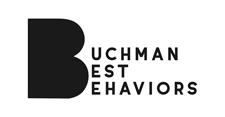Puzzle Feeder Training
- Whitney Buchman

- Jul 15, 2020
- 2 min read
Puzzle feeders can be great distractions for pets. Particularly when you need to be occupied with another task, such as a Zoom meeting. Sometimes an animal's drive for the reward will be enough to get them to interact with a puzzle feeder, other times they need some help. It is easy for an animal to lose interest once they think the rewards are impossible to get.
I worked with Sassy in this video to teach her how to use the puzzle feeder. This methodology of training involves no physical interaction from myself. I felt it was important to avoid physically showing her how to do it via mimicry to avoid the need for people interactions when the puzzle feeder is out.
A variety of approximations were used to get Sassy to the final behavior of playing with the puzzle feeder on her own. Approximations are small breakdowns of a behavior that lead to the final behavior. Think of them as steps to a goal. When getting on a ladder you don't jump to the top rung. You take each step one by one. For Sassy we started by just looking at the feeder. Then we moved to touching the feeder in any way. Then to touching only the bottle portions.
Then using a paw on the bottle portions. Like anything, it is important to be flexible when working with behaviors. Occasionally there is a step or two back in the wrong direction. It is important to not become frustrated with the animal and analyze why the animal is not progressing as we want. Did the rate of reinforcement (speed of rewards) slow down? Are the reinforcers to weak to keep the animal's attention, i.e. do we need something more fun or tastier? Did our human brains skip 2 or 3 rungs on the ladder of steps and we need to make smaller approximations? The main thing is that we adjust to the animal's needs for the learning process.
Using positive reinforcement we can teach animals with minimal contact and maintain their happiness throughout the process.






Comments